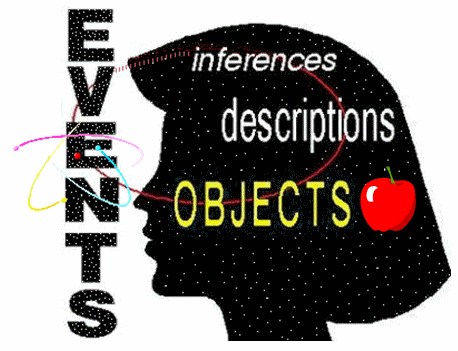
Multiordinality
Written 1996 by Steven Lewis
Alfred Korzybski discovered that we abstract in endless orders, and he used the term "multiordinal" to refer to these different levels of abstraction. Multiordinal means "many levels." Korzybski spoke frequently of multiordinal semantic processes, m.o. mechanisms, m.o. structures, m.o. realities, m.o. terms .... The m.o. terms included those that could be applied to different levels of abstraction.
The term "description" is an example of an m.o. term. We can describe something, then we can describe what we described. We can continue this process indefinately.
We also have descriptions of more or less generality (abstractions of different orders).
1. The brachial biceps contracts.
2. Skeletal muscles contract.
3. Muscles contract.
Each succeeding statement is more general than its predecessor, and includes the predecessor by implication. Each succeeding statement serves as an increasingly higher order abstraction.
"Fact" is a term that can be applied to different levels of abstraction. Your weather right now is a "fact." If you like your weather right now then that also is a "fact," but a fact of higher order. "Fact" does not just apply to non-verbal events, but can apply to our attitudes and theories. Even Einstein's theories are facts of this world (higher order facts) independent of whether they be true as theories. A similar analysis can be applied to the m.o. term "reality."
I did not eat lunch today. ("true")
I said I did not eat lunch today. ("true")
I just said that I said I did not eat lunch today. ("true" again)
In the example above, "true" was applied to different levels of abstraction, and so can function as a m.o. term. On the other hand:
Franklin Roosevelt was president of the United States during World War II. ("true")
Kansas is one of the United States. ("true")
These are merely two different statements on the same level of abstraction to which we can reply "true." "True" in this context is not used as a multiordinal term, although it is still being used as a variable term whose specific content is represented by the statement to which it is attached.
Most of us would agree that hating someone just because of their skin color is not a very extensional evaluation. Hating your hate reactions toward people of a certain skin color may be a highly extensional and beneficial reaction. The higher order hate may reverse the effects of the first order hate and lead to the abolishment of the lower order hate.
On the other hand, your hatred of people with yellow skin and of people of black skin are hatreds on the same level of abstraction.
My use of multiordinality in my classes usually involves levels of organization. I introduce m.o. to my students the first week of class. I tell them we will be studying the body on different levels of organization: atomic, molecular, organelle, cell, tissue, system, the intact organism. Hydrogen and Helium are not on different levels of organization -- both are classified as atoms. Molecules, however, are composed of atoms, and so appropriately are labelled a higher level of organization than the atoms of which they are built.
Isn't m.o. fun? And quite liberating, once you get the 'hang' of it!
Go to General Semantics Home Page ||| Go to Steven Lewis Home Page